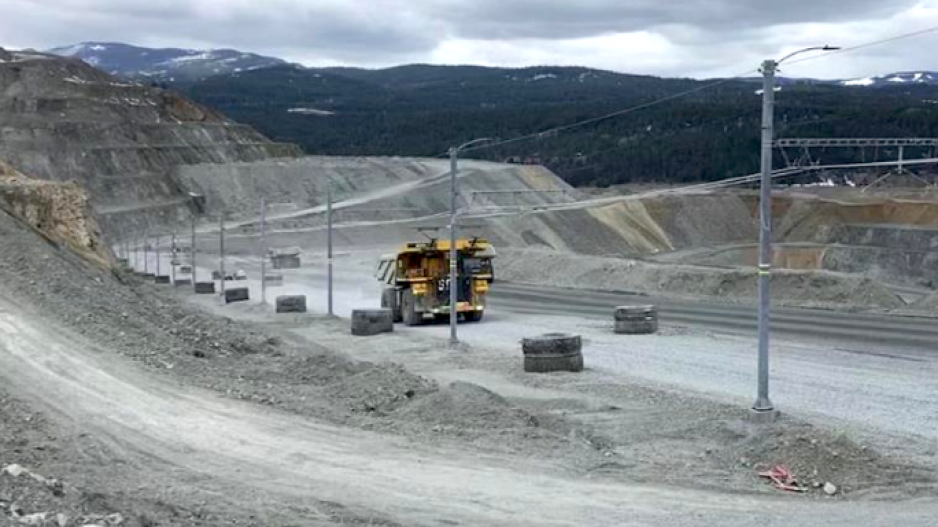An expansion of the Copper Mountain mine near Princeton will not require a full environmental review, the B.C. Environmental Assessment Office (EAO) has ruled.
Despite a call from the Lower Similkameen Indian Band and the Wildness Committee to subject the expansion to a full EAO review, the office recently ruled that the increased land disturbance required for the expansion falls below the threshold that would normally trigger a full EAO review.
“In its submission, Lower Similkameen Indian Band indicated that the extension could have potential effects on Lower Similkameen Indian Band and its rights,” writes Elenore Arend, the EAO’s chief executive assessment officer, in a Dec. 7 decision.
“In considering Section 11(4)(b) of the act, I am mindful that if a project could have effects on Indigenous nations and their Section 35 rights, it does not mean that the decision maker must designate the project as reviewable.”
Mine expansions can be treated like a new project, requiring a full environmental review by the EAO, if the expansion exceeds certain thresholds, in terms of production and land disturbance.
While the expansion proposed for the Copper Mountain mine does meet the threshold for production, the amount of additional land disturbance doesn’t.
“To automatically require an environmental assessment (EA) … a modification to an existing mineral mine must have a production capacity equal to or greater than 75,000 tonnes/year of mineral ore, and result in the disturbance of an area of land that was not previously permitted for disturbance and that is at least 50 percent of the area of land that was previously permitted for disturbance at the existing project,” Arend notes.
“The designation report describes that the extension would have a production capacity of over 75,000 tonnes/year of mineral ore, but the increase in area of disturbance (over that which is already permitted) represents an increase of 13.8 percent. This increase in area of disturbance is quite a bit lower than the threshold of 50 percent.”
In the absence of a full EAO review, the mine’s expansion will be regulated by the Major Mines Office, under the ministry of Energy, Mines and Low Carbon Innovation (EMLI) and the ministry of Environment.
“I believe that the permitting process through EMLI’s Major Mines Office with (ministry of Environment) can fairly, effectively, and appropriately address the concerns raised by Lower Similkameen Indian Band and the Wilderness Committee,” Arend concludes.
The Copper Mountain copper-gold mine near Princeton has operated off and on since 1972, with open pits mined on either side of the Similkameen River.
In 1972, the Ingerbelle deposit on the west side of the river was mined, and then mining switched to the Copper Mountain deposit on the east side of the river in 1980.
The mine shut down in 1996. When the Copper Mountain mining company restarted the open-pit mine in 2011, it was the first new metals mine to open in B.C. in more than a decade.
But the Copper Mountain pit is expected to be exhausted in about a decade, so Copper Mountain applied for a mine expansion that would see mining operations eventually move back to the other side of the river to the New Ingerbelle deposit.
In June this year, Copper Mountain was acquired by Hudbay Minerals Inc. (TSX, NYSE: HBM), which owns 75 per cent. Japan's Mitsubishi Materials Corp. owns 25 per cent.
The mine currently employs 465 people and has an annual payroll of $53 million. The proposed mine expansion is expected to extend the mine’s life out to 2047.




